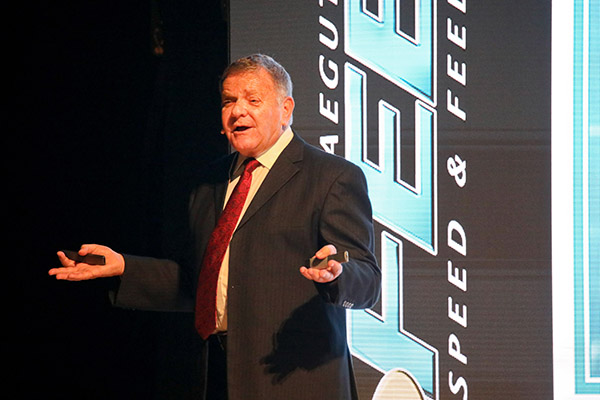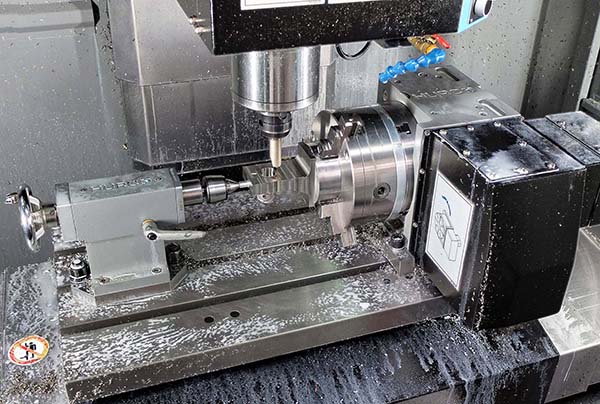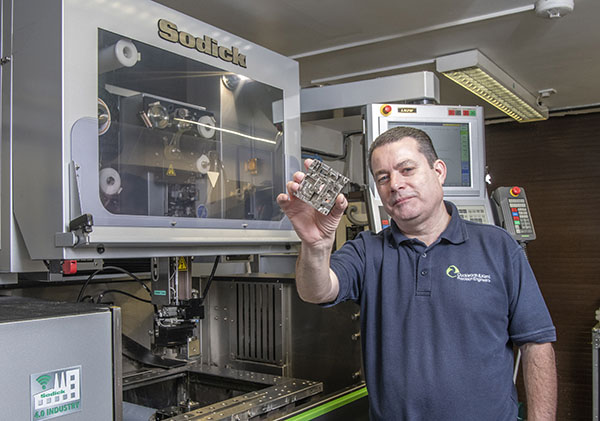Over the past eight years, Cumbernauld-based contract machining specialist Cowie Engineering has doubled annual turnover, increased headcount from 13 to 24, and acquired (in 2013) an adjacent factory unit of equal size to the original, raising the total floor area to 9500 sq ft. During this time, the number of vertical machining centres on the shop floor, all of which are from Hurco, has also doubled, to 10. Additionally, a Hurco 10” chuck CNC lathe has been on-site since 2011.

The latest Hurco addition is a VMX60SRTi five-axis VMC with swivelling spindle head and flush rotary table, a design that is providing maximum working volume for the single set-up machining of larger parts used in the oil and gas industry. This machine is also allowing the subcontractor to gain extra contracts from the motorsport sector, particularly for high-tolerance components produced in one hit from materials such as from stainless steel and steel alloys, through to aluminium and plastics. The use of linear scales rather than encoders for positional feedback from the linear axes, together with Renishaw part probing and tool length setting, provide the elevated levels of precision demanded in race-car construction.
Typical tolerances held are from ±0.05 mm, down to 8 or 9 µm total. This demand has necessitated the installation of a new CMM, an Aberlink Axiom Too, in a temperature-controlled room. In addition, a full-time inspector has been appointed to verify that Formula One components coming off the Hurco machines, and others, are compliant.
Prior to the arrival of the VMX60SRTi, the most recent VMC additions (in 2018) were two of the manufacturer’s latest generation VM10i machining centre, one of which has a 4th-axis. These models were preceded by the arrival of a VMX42T and a VM2, both of which were installed in 2016 equipped with Hurco 4th-axis rotary tables. Other equipment in use includes seven more lathes and a Sodick CNC
wire-erosion machine.

Ross and Grant Cowie, sons of company founder Rodger, together with his wife Cathie and daughter Julie (who has just qualified as a chartered accountant), all work full-time in the business. Cowie Engineering was established in 1999 and, at the start, all machining was carried out on manual mills and a lathe. However, it was less than two years before the first CNC machine arrived, a second-hand Hurco BMC25 with a 1050 x 500 mm table, which allowed larger and more complex components to be produced.
The North Lanarkshire company has standardised on this make of VMC ever since, due to the reliability of that early model together with the speed and user-friendliness of the conversational control, originally Ultimax and now called WinMAX. It was and still is ideal for producing the subcontractor’s small batches of one-off up to 50-off.
Other Hurco machines followed: a VMX30 in 2011 which replaced the original VMC; a Hurco BMC4020 with 1220 x 510 mm table in 2004; a VMX64 with an even larger table and 4th axis in 2009; and a pair of smaller VM1 models shortly afterwards.

The type of work undertaken by the ISO9001-accredited firm has changed over time. Early contracts were mainly in mining, defence, construction and bottling, as well as in food and switchgear, but more business today comes from the latter two sectors, along with motorsport, the electrical industry and, increasingly, oil and gas, which now appears to be emerging strongly from a marked and sustained downturn.
New also in Cumbernauld in the past couple of years has been the installation of an offline CADCAM system from OneCNC. Previously, all programs for the VMCs were created at the Ultimax/WinMAX controls using touchscreen conversational menus, sometimes with direct input of DXF data to describe more complex geometry.
Now, with the arrival of the CAD package, sections of ISO blocks can be extracted and inserted anywhere within a conversationally created cycle, any number of times, to stitch together a complete part program using the NC Merge feature within WinMAX. This capability considerably advances the subcontractor’s programming capability.
Further useful features within the latest version of the Windows-based WinMAX software exploited by Cowie Engineering include: ‘Mill Polygon’, which facilitates milling a multi-sided contour with equal-length sides; and ‘Mill Slot’, which creates a slot defined by a line or an arc segment and a width, the slot ends being round or square. ‘Swept Surface’ functionality built into the control also continues to be used frequently. This function allows a 2D surface to be moved along a contour to create smooth 3D geometries within one conversational data block.
Company director Ross Cowie says: “We have historically machined a lot of stainless steel, particularly for the food industry, and the material still accounts for around a fifth of throughput. Lately, new contracts have introduced diverse engineering steels as well as challenging alloys such as Duplex, Inconel and titanium, plus more aluminium and plastics.

“We use our Hurco 4th axis tables regularly to gain access to parts for machining on multiple sides, hopefully in one hit,” he continues. “We position them individually with or without a tailstock, or alternatively mount multiple parts on a trunnion for indexing. Sometimes we machine components requiring full simultaneous 4-axis cycles.”
Today, the subcontractor is renowned for its quick turnaround and high-quality work. The third trainee since 2011 has started his apprenticeship and the first two are established members of staff, helping to assuage a lack of skilled operators in Scotland. Continued success in the future will be secured by the firm’s track record of business retention, some current customers having been served by the subcontractor since the very early days.
For further information www.hurco.co.uk


























